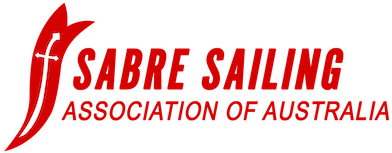Home › Forums › Other Stuff › Newbie Questions › Mast Rake
- This topic has 7 replies, 5 voices, and was last updated 16 years, 6 months ago by
Meryl Todd.
-
AuthorPosts
-
December 12, 2007 at 9:11 am #6021
heymacaulay
KeymasterHi Sabre Techs! I thought I saw a measurement in one of the forums for the distance from masthead to transom. Can’t find it now. Does anyone know?
Cheers, Don.
December 12, 2007 at 11:09 pm #7146liamedleston
KeymasterTo some extent the position of the mast step will affect rake.
My mast step is 20mm forward of the most aft position allowed by the rules. I use a Loos guage on the shrouds to repeat settings. Wayne Bates moved his mast step back to the same position and has similar mast rake.Every 5 units of measure on the Loos guage translates to 10mm of rake.
The following measures are top black band to the top of the transom (outside).Loos Measure Rake mm
0 5750
5 5760
10 5770
15 5780
20 5795hope this helps
Barry Eastgate
December 20, 2007 at 8:32 pm #7147Meryl Todd
ParticipantBarry, I fully agree the mast step positions impact on rake. I moved mine maximum aft to reduce rake simply to give me more headroom on tacking; however could please you expand on what is happening as you tighten your rig?
As I tighten my shrouds the mast bends allowing the mast tip to go aft shortening the black band:transom distance. I have the shroud and forestay attachments maximum tolerance apart to promote bend as most of my sailing is light wind, thus easing the leech. The result is my rake: Loos gauge distances appear to move opposite to your results.
As for optimal rake, I suggest adjusting the shrouds until the boat is balanced with about 2 degrees of helm going to windward. My new Irwin requires one-two shroud holes longer than the old sail to get the same balance due to sail shape differences.
September 14, 2008 at 1:03 pm #7148heymacaulay
KeymasterHi guys,
For us numpties, who just wing it most of the time.
Can someone please explain Loos guage?
Regards . . .
September 14, 2008 at 11:27 pm #7149syreetanajera
ParticipantIt’s for measuring tension in a wire. see e.g. :
http://www.landfallnavigation.com/hlpt2.htmlA cheaper version is also available from Superspars:
http://www.sailboats.co.uk/product~Superspar_Tension_Gauge_254mm_wire_SU-RTGS.html
or the harken alternative…….(better be sitting before you look at the price of this one!!_
http://www.purplemarine.com/Product.aspx?ProductCode=H7850
All work by bending the wire & converting the force used to bend the wire a known amount into the load being carried by the wire.
September 15, 2008 at 10:12 am #7150Paul Matthews
ParticipantOMG
I knew they meaured this stuff south of the border … BUT
… i am an insensitive bitch .. no feel for balance in the boat
… where do I start?
… no Loos guage up here!What’s a good starting point .. I’m running a training session in a few
weeks!If u have a secret to success email me at [email protected]
[Those who help will be rewarded at Safety Beach]Slowest Hand
September 15, 2008 at 11:53 am #7151heymacaulay
KeymasterDamn,
I’ve seen people use them, never new they were named after a toilet.
I always just use Mk1 finger tension gauge when I rig Fiona’s boat and just ask SHMBO (She who must be obeyed) if she is happy.
Regards . . .
September 18, 2008 at 12:46 am #7152Meryl Todd
ParticipantThe advantage of a rig tension measurement tool is that it helps you repeat the tension that won you the last race, or sneak up to the winning boat and find out her secret.
Regardless of the make, they are all basically a spring which measures the pressure needed to pull the wire out of line. The more rig tension in the wire, the stronger the pressure to obtain the standard distortion. The stronger the wire the more pressure required, this is why the calibration figure differs for the diameter of wire. For example on a Loos model A pulling out to the 32 mark indicates 181 kg in a 2.5 wire, 136 kg in 3.0mm but only 91 kg in 4.0 m wire. That is 1x 19 wire, the equivalent tension in 1×7 dyform wire would be different as it’s a stiffer wire.
In many more complex rigs the sailmaker will give you a crib sheet of major numbers for tensions, rakes and spreader angles. For example I have a 10 page Int. Dragon tuning guide from a sail maker. It certainly helps when they are some 10,000 possible combinations.
The Sabre is extremely simple, and any guitar player can tune one with a MK1 RTG but they may not always be singing your song.
-
AuthorPosts
- The forum ‘Newbie Questions’ is closed to new topics and replies.
